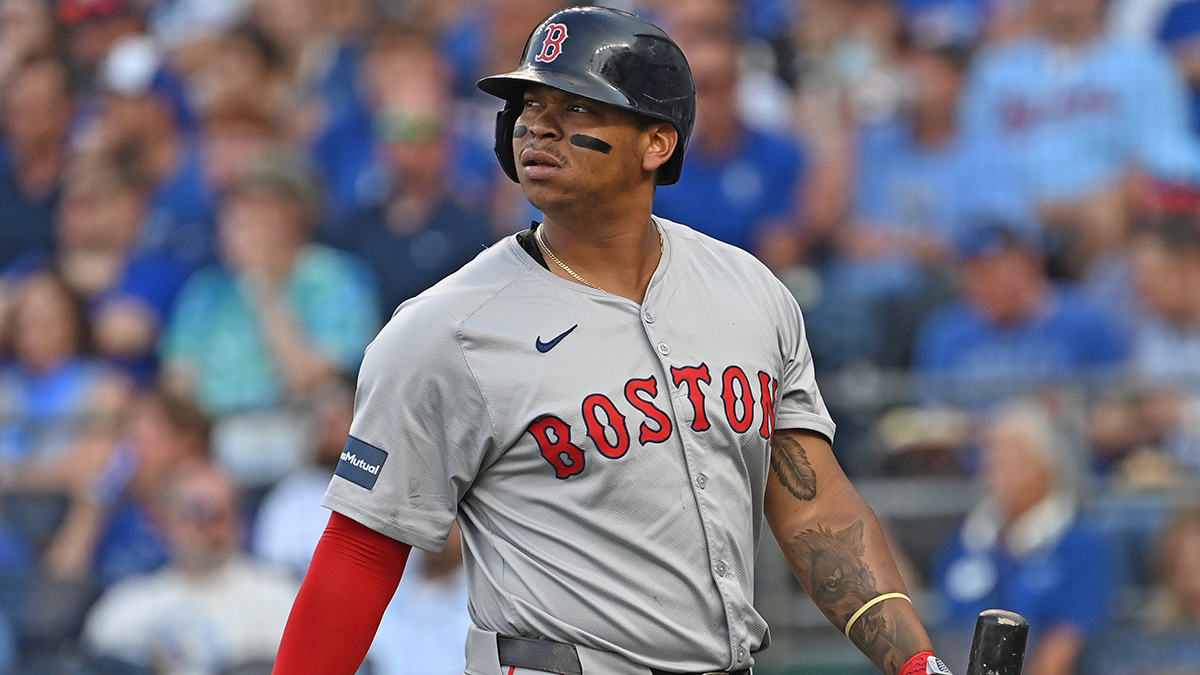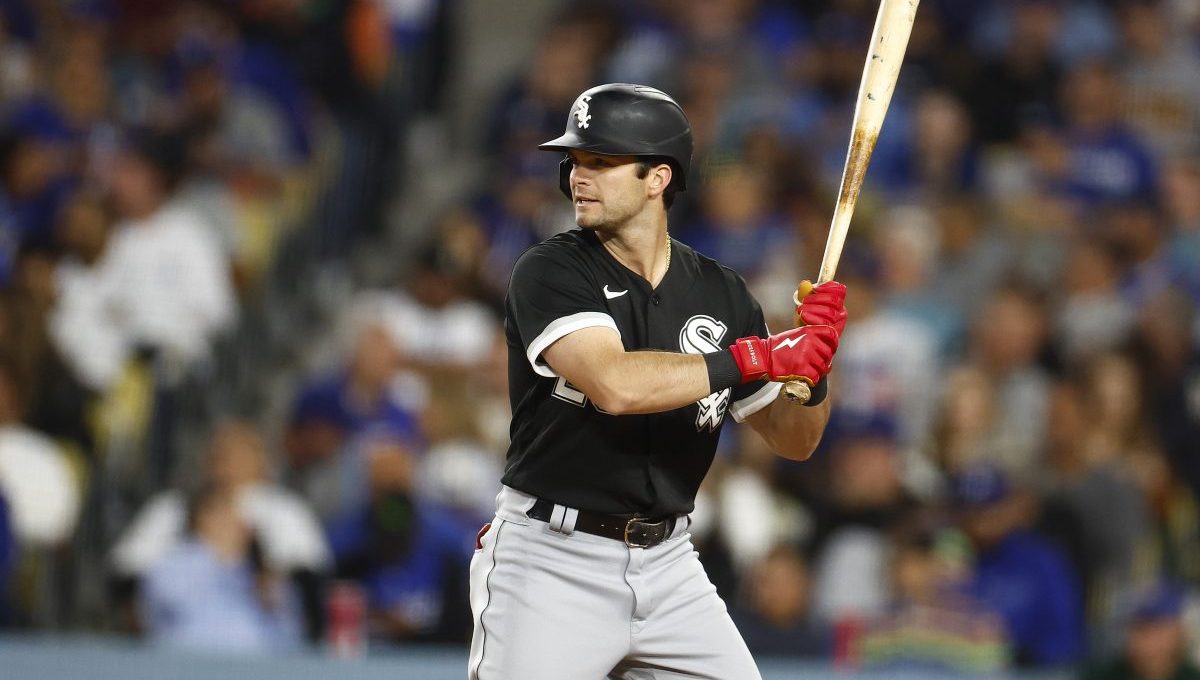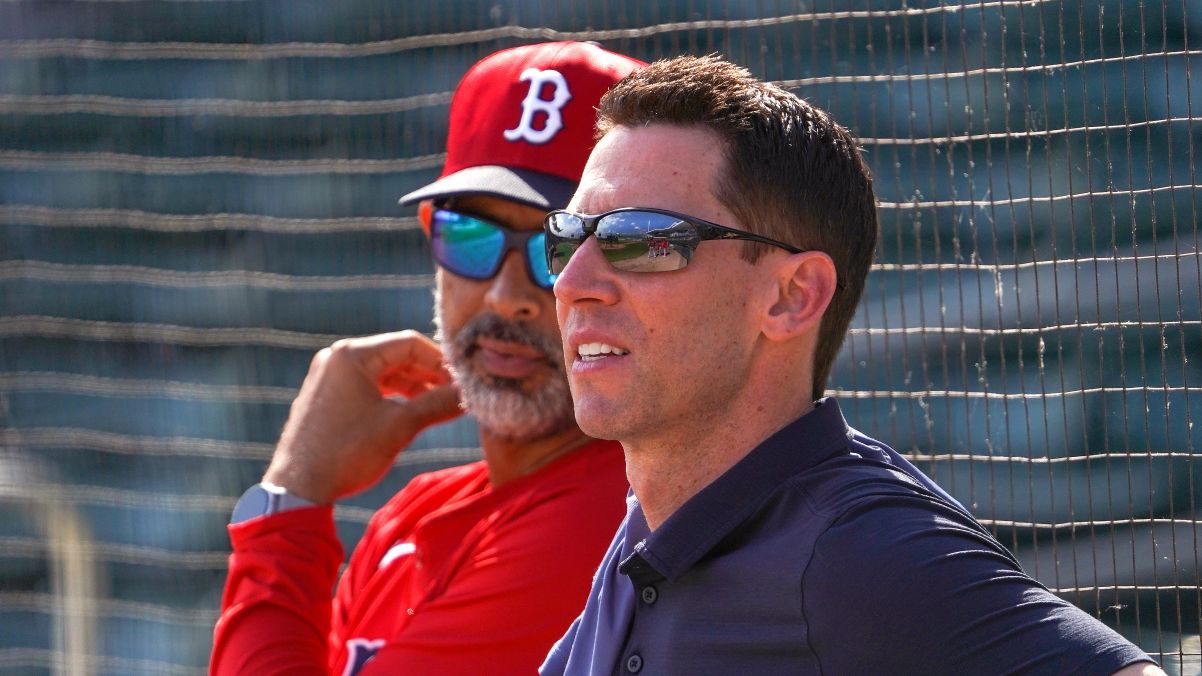Much like presidential polls represent a snapshot in time and not necessarily a predictor of November, grades on big-league transactions can fluctuate. One person's A can become the same person's F, especially if the trade involves Mookie Betts and that man (me) is stupid.
Trades can be judged two ways, then -- in the moment and in the long term. In the moment, for instance, Larry Andersen helped the Red Sox reach the 1990 playoffs. In the long term, Jeff Bagwell may have been slightly better.
Craig Breslow is new to the job of chief baseball officer, so his deals can only be judged in the moment. With the Red Sox officially falling back to .500 on Wednesday night after being swept by the Mets, now is a good time to evaluate just how successfully he has impacted the big-league roster.
Stay in the game with the latest updates on your beloved Boston sports teams! Sign up here for our All Access Daily newsletter.
We've chosen 10 transactions since December that were either trades or free agent signings. That means no grades on deals like the one that sent reliever John Schreiber to the Royals for right-hander David Sandlin, or the prospect swap of Nick Yorke to the Pirates for Quinn Priester. We're ignoring waiver claims, too, because the Red Sox have combed enough landfills over the last three years to last a lifetime.
The picture that emerges is mostly uninspiring: one or two hits, one unmitigated disaster, and one no good, very bad trade deadline. Maybe the longer term prognosis is better.
To the grades!
MORE RED SOX COVERAGE
1. Traded OF Alex Verdugo to Yankees for RHPs Richard Fitts, Nicholas Judice, and Greg Weissert
The trade itself feels pretty nondescript. Weissert has been up and down and remains homer prone, but he's a serviceable reliever. Given the struggle to find starting pitching, the fact that Fitts never earned the summons from Triple-A Worcester doesn't bode well. Judice is a 6-foot-8 project.
But this deal is a win because of what went out the door. The Yankees are living the Verdugo experience, with its hot start followed by a long fade and bouts of immaturity. Removing Verdugo from the equation opened a starting spot for Wilyer Abreu, and he's a keeper.
Grade: B
2. Traded LHP Ryan Ammons to Mets for RHP Justin Slaten
This was technically a trade but effectively a Rule 5 selection. The Red Sox traded Ammons, a 2023 draftee, to land Slaten, whom the Mets had taken from the Rangers.
It is easily Breslow's best move, a low-cost acquisition that landed one of Alex Cora's most reliable arms, at least until injury struck in July. Slaten doesn't walk anyone and he keeps the ball on the ground. He may not be a Garrett Whitlock-level Rule 5 steal, but he's in the ballpark.
Grade: A
3. Traded RHPs Victor Santos and Nick Robertson to Cardinals for OF Tyler O'Neill
Remember that snapshot in time thing? The grade on this deal changes by the month. In April, when O'Neill was launching bombs like Aaron Judge, it was an A-plus. He has since lived up to his reputation for being oft-injured, and his grade has suffered. Some of the numbers – 25 homers, .862 OPS – make this look like an easy A. But watching O'Neill, his impact has felt intermittent, with only 50 RBIs to show for all those homers. And the former Gold Glover's defense has regressed, too. Whatever. This is still a deal you'd make again.
Grade: B-plus
4. Signed RHP Cooper Criswell
A hallmark of the new-school executive is turning flotsam into slightly better jetsam. For four years, it seemed like Chaim Bloom never signed anyone with an ERA below 8.00, constantly searching the dumpster for diamonds.
Criswell owned a lifetime ERA of roughly 6.00 between the Los Angeles Angels and Tampa Bay Rays when the Red Sox signed him for $1 million, with little to differentiate him besides a funky delivery. He ended up rescuing the rotation when injuries struck early, and he has offered a solid return on a modest investment.
Grade: B-minus
5. Traded LHP Chris Sale to Braves for 2B Vaughn Grissom
F. Let's just get that out of the way. This is an effing F.
Some of us liked the deal not only at the time, but even in May, when Sale looked like a renaissance All-Star and Grissom couldn't hit at all. The will-he-or-won't-he nature of Sale's Red Sox availability had become exhausting, and I will never fault Breslow for eliminating the uncertainty. It still feels miraculous the skinny lefty has stayed healthy in Atlanta.
Unfortunately, he has done much more than that. Sale is on pace to claim his first Cy Young Award while leading the National League in wins (16), ERA (2.46), and strikeouts (206). If you had the Triple Crown on your post-trade bingo card, god bless.
Meanwhile, the promising Grissom has given the Red Sox so little, it's fair to wonder if he has any future in the organization. He got hurt in spring training, got sick in April, and never recovered. A .320 hitter in the minors, he batted just .148 with the Red Sox, his absence turning second base into a black hole.
In fact, we have revised our kneejerk assessment.
Grade: F-minus
6. Signed RHP Lucas Giolito
There was a case to be made for the Red Sox just having a Royals-like offseason. I made it at the time: Sign starters Seth Lugo and Michael Wacha to build legitimate rotation depth, and let everyone else fight over Yoshinobu Yamamoto and Blake Snell.
The Red Sox didn't even aim that high, instead inking Giolito to a two-year deal as a reclamation project after his career careened from All-Star with the White Sox to the rare trade deadline splash who ends up getting cut a month later by the Angels.
The Red Sox believed they could help Giolito regain something resembling his prior form, but they primarily signed him as high-floor, low-ceiling innings eater, and we all know how that turned out. He underwent season-ending elbow surgery in spring training. Maybe this deal will pay off in 2025, but for now it's a zero.
Grade: D
7. Traded INF Moises Bolivar to Dodgers LHP for James Paxton
The Red Sox hit mid-July in desperate need of rotation reinforcements. Tanner Houck had already topped his career-high in innings, with Kutter Crawford right behind him. The Red Sox wouldn't survive the pennant race without help, and Paxton felt like a good start, acquired from the Dodgers on a waiver deal a week before the deadline.
Unfortunately, Paxton ended up being the entirety of their starting upgrades, and given his consistent lack of durability, no one could've been surprised when he lasted exactly two starts and five pitches before straining his calf and ending his season.
Grade: D
8. Traded RHP Gilberto Batista, IF Cutter Coffey, IF Eddison Paulino to Blue Jays for C Danny Jansen
The problem with Breslow's approach to the trade deadline, we can now say, is that it simply represented an exercise in box checking. And one of the boxes that needed marking was a right-handed bat off the bench.
The Red Sox acquired Jansen for his pull-side power, and sadly, it has not been in evidence. He has contributed only two extra-base hits and is hitting just .207 with a .592 OPS. That basically makes him a carbon copy of Reese McGuire, the backup catcher he replaced. So much for upgrading.
Grade: D
9. Traded RHP Ovis Portes to Reds for RHP Lucas Sims
The next boxes that required checkmarks: relievers. Breslow went the straight rental route here, and he whiffed on both arms.
Sims seemed to have some upside as a swing-and-miss guy, and he did strand all 11 runners he inherited, which isn't nothing. But an 8.00 ERA is an 8.00 ERA, and Sims contributed to two of the worst losses of the year against the Astros, serving up a game-tying homer to Jose Altuve in one and a tying single to Mauricio Dubon in the other.
He landed on the injured list with a lat strain, so his season could be over. Making matters worse: the 19-year-old Portes was well-regarded, so this grade could suffer down the road.
Grade: D
10. Traded SS Matthew Lugo, RHP Yeferson Vargas, 1B Niko Kavidas, RHP Ryan Zeferjahn to Angels for RHP Luis Garcia
If Garcia has proven anything over his 10-plus years, it's that he's a perfectly average reliever. And there's value in that. Post an ERA around 4.00, strike out a batter an inning, keep the line moving to the better arms in the eighth and ninth.
Had Garcia just been that guy, Breslow could've claimed a win. Instead, Garcia allowed runs in six straight outings at exactly the moment when the Red Sox needed stability.
By the time he hit the injured list with a bad elbow, the damage had been done. The Red Sox claim the injury isn't season-ending, but Garcia has already done his part to keep the Red Sox out of the playoffs.
Grade: F



